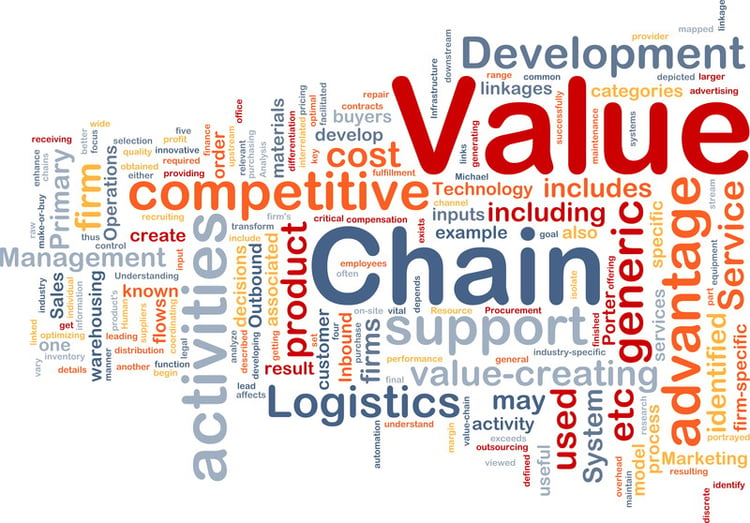Is Your Supply Chain Evolving Into a Value Chain?

Information technologies have evolved and so have the expectations of the business community. Do you remember when the main objective was automation? Now organizations who continue to view their supply chain applications as transactional engines are missing huge opportunities. Supply chain applications must provide a competitive edge by offering differentiation, depth of functionality, adaptability and robust analytics. The supply chain is also continuously evolving; its evolution leads us to the value chain.
Evolving your supply chain into a value chain will provide your organization with a competitive advantage. The concept of value chain has been around for a while but what does it mean? Value is a subjective experience and is greatly dependent on context. Remember the saying, “One man’s garbage is another man’s treasure.”? Or was it a woman? Kidding aside, value occurs when a need is met. Is your organization taking an order and shipping a product or are you filling a need through the provision of product, services and resources? A product provides value, however your organization should also add to that value in order to retain customers.
Don’t try to come up with what that value should be on your own; it has to flow from the customer. In other words, you must define value from your customer’s perspective. Typically, there are 3 forms of value in a commercial transaction: technical, organizational and personal. The technical value is intrinsic to the resource or product being provided. The organizational value is built upon the context of the exchange; for example, your company’s reputation adds to the value of your product. The personal value is derived from the personal experiences and relationships involved in the exchange.
Competing based on these 3 forms of value takes your organization away from competing on price alone. Furthermore, activities that are not associated to providing value must be minimized. This exercise is not only about cost reduction, it also promotes the message of value throughout your organizations. In the end, creating a profitable value chain requires alignment between what the customer wants and what is produced in the supply chain. Which values do your customers treasure most?


